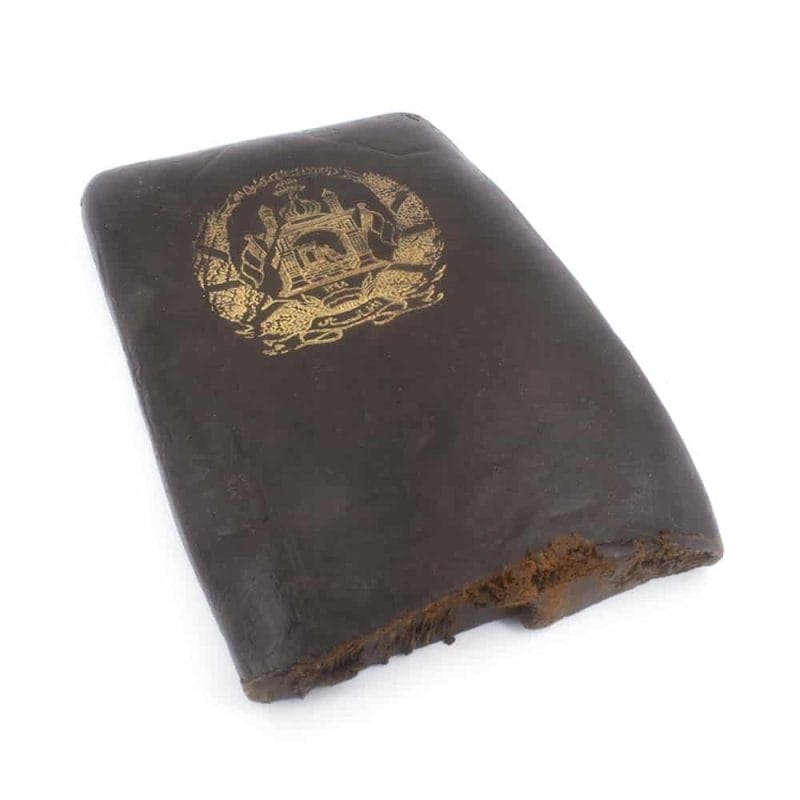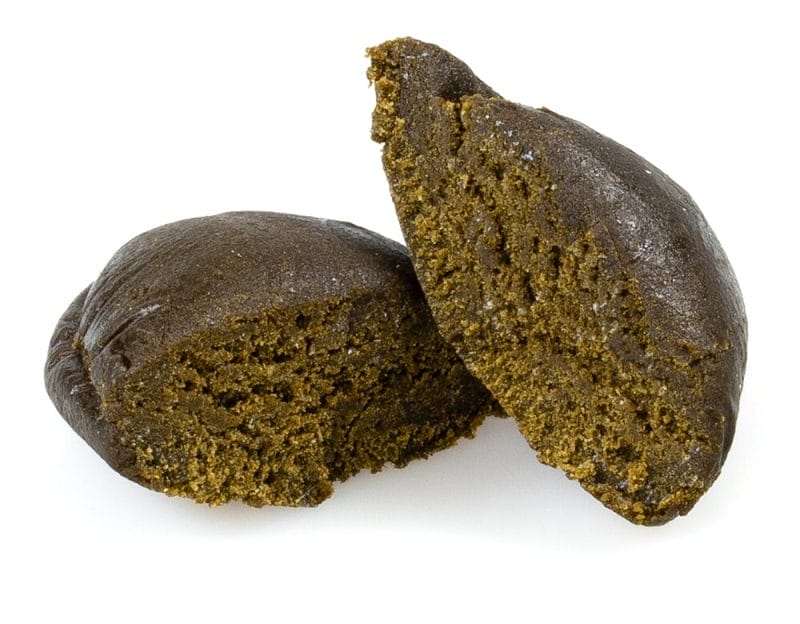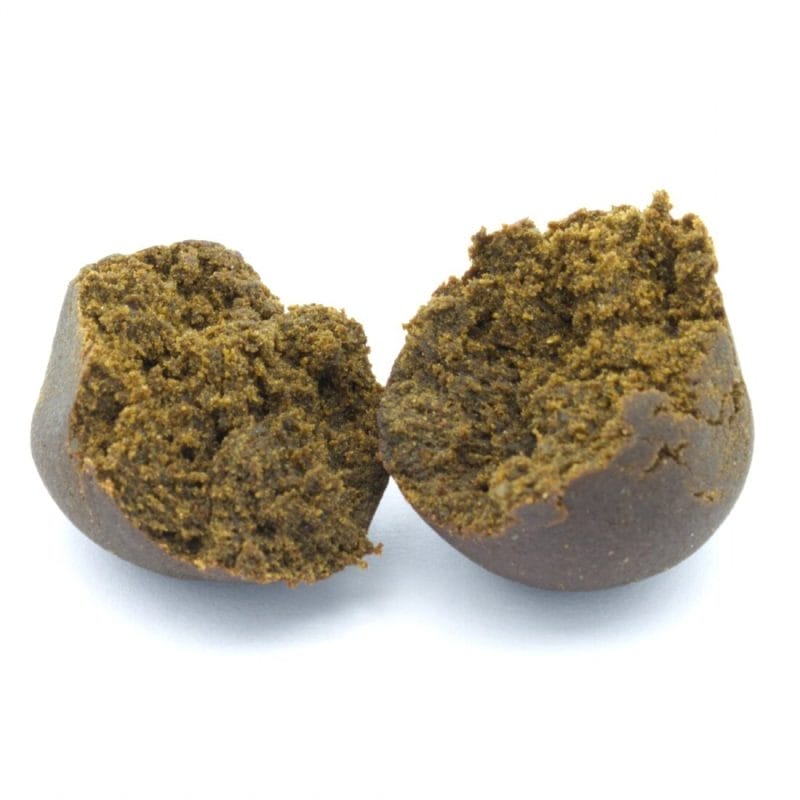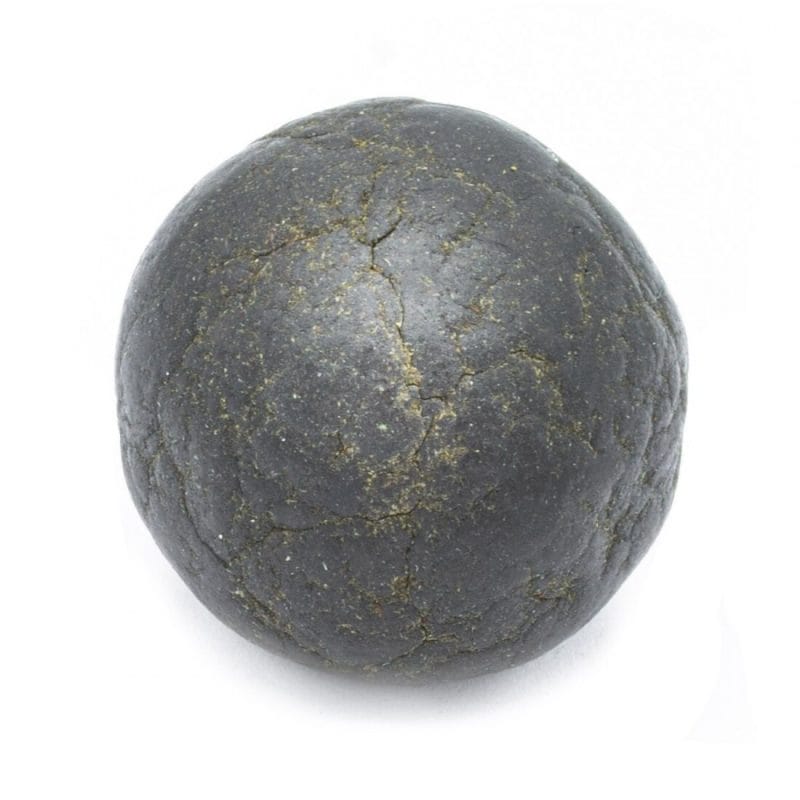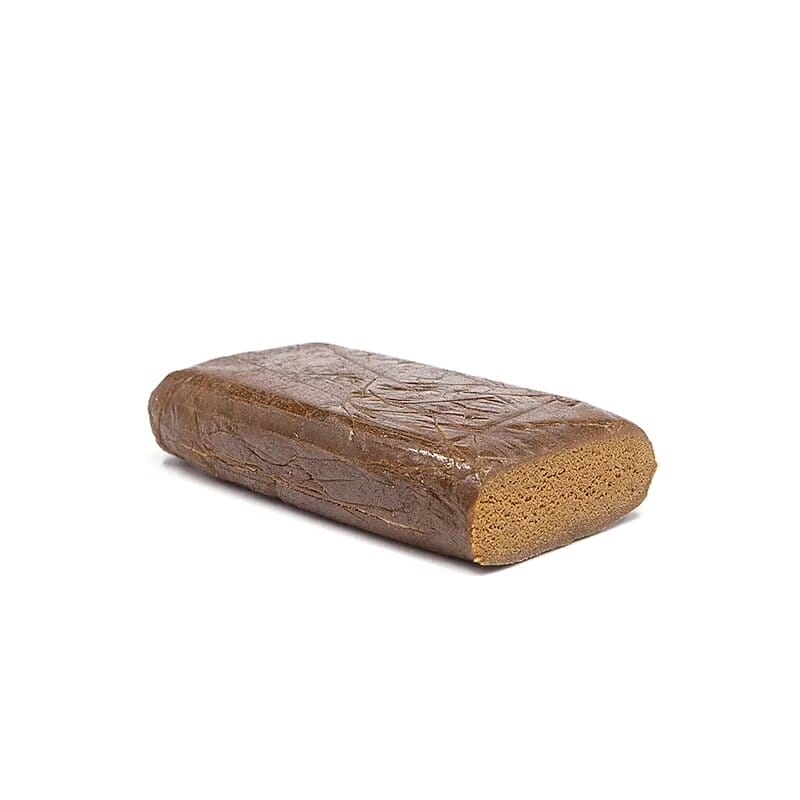Hashish, a concentrated derivative of cannabis, is known for its richness of aromas and textures, which vary greatly depending on origin and method of production.
In the UK and around the world, hashish comes in many forms, each with distinctive characteristics that reflect the cultural traditions and agricultural techniques of the regions of origin.
From Afghan hashish, known for its springy texture and intense aroma, to Moroccan, prized for its earthy flavour and smoothness, each type offers a unique experience for connoisseurs.
But which hashish to choose to fully satisfy one’s taste? Knowing all the existing types of hashish allows you to make informed and considered purchases.
In this article, we will discover together the types of hash you can find in the UK and around the world to guide you in your cannabis experience.
Hashish
Hashish, also known as solid, is a substance derived from the Cannabis sativa plant. It is obtained by processing the resin, ‘kief’, of the female inflorescences of the plant, which contains high concentrations of cannabinoids.
Compared to cannabis obtained from the plant’s plant parts, hashish has a higher average CBD and THC content, precisely because the resin contains a higher amount of cannabinoids than the rest of the plant. This gives hashish much more intense and long-lasting effects, which can sometimes even result in illegality.
Its potency has made it illegal in some countries of the world. While in others, including the UK, variations of light or legal hashish have been made with a controlled THC content of less than 0.2%, ensuring safe consumption.
Hashish is generally in the form of a compact solid, varying in colour from dark brown to greenish-black, with a consistency that may be crumbly or soft depending on the method of production. Its odour is strong and characteristic, often described as earthy, resinous or with spicy notes.
How many types of hashish are there?
The variety of hashish is vast, given the different geographical origins and production methods used. The main types of hashish in the UK are Moroccan, Nepalese and Afghan.
In addition to these main varieties, there are numerous other types of hashish from all over the world, each with its own unique characteristics. The quality of hashish can vary greatly depending on the method of production and the conditions under which the cannabis is grown.
Let’s look specifically at the most popular types of hash that you can find on the market, to understand the inherent characteristics of each and the experience they bring.

1. Dry sieved hashish
Dry sifted hashish, which is part of the dry hashish types, is a cannabis concentrate obtained by a simple and time-honoured extraction method.
How it is produced:
- Sieving: the dried cannabis buds are sieved through a series of fine mesh screens, separating the trichomes, the resin glands that contain the cannabinoids, from the plant matter;
- Harvesting: the trichomes fall through the screens and settle on a collection tray, creating a golden powder called kief;
- Pressing: the kief is then pressed firmly to compact it into a solid lump of dry-sifted hashish; the colour and consistency of the final hashish varies depending on the quality of the kief and the method of pressing.
What are the advantages?
- High cannabinoid concentration: dry-sifted hash contains a high concentration of cannabinoids;
- Simple process: the production of dry-sifted hash requires minimal equipment and a relatively simple process;
- Pure: the sieving method results in a product free of plant impurities, ensuring a cleaner smoking experience and a purer flavour.
However, there are also disadvantages:
- Variable yield: the amount of kief obtained from sieving depends on the quality of the cannabis buds used;
- Loss of terpenes: the sieving and pressing process may result in a partial loss of terpenes, the aromatic compounds in cannabis that contribute to the overall taste and effect.
The results obtained with this method may therefore be very different.
2. Hand-rubbed hashish
Hand-rubbed hash, also known as charas or rub, is a type of cannabis concentrate obtained by a traditional and simple extraction method that uses hand friction to separate the trichomes, the resin glands containing the cannabinoids, from the inflorescences of the plant.
Production method:
- Harvesting the buds: fresh cannabis buds are harvested by hand during the peak flowering period, when the trichomes are rich in resin;
- Rubbing: the buds are rubbed vigorously between the hands or with other rough materials, such as a piece of cloth or a sieve; the friction causes the trichomes to detach from the inflorescences, which are then deposited on the hands or material used;
- Collection of the resin: the collected resin is then scraped off the hands or material and pressed into a solid lump of hand-rubbed hashish.
Let’s see the disadvantages:
- Ancient and natural method: the production of hand-rubbed hash is a traditional method that does not require complex equipment or chemical solvents;
- Unique flavour: has a unique, earthy taste, often appreciated by cannabis connoisseurs;
- Intense effect: can have a psychoactive effect, due to the high concentration of trichomes.
There are also some disadvantages:
- Laborious process: the production of hand-rubbed hashish requires considerable manual labour and can be a messy and sticky process;
- Variable yield: the amount of resin obtained from rubbing depends on the quality of the cannabis buds used and the processing technique;
- Contamination: the manual production method may increase the risk of contamination by bacteria or other microorganisms.
The colour and consistency of the final hashish depends on the variety of cannabis used and the processing method.
3. Moroccan hashish
Moroccan hashish, also known as keef or hach, is one of the most popular and well-known types of hashish in the world. It is renowned for its intense aroma, strong taste and powerful psychoactive effects.
Here are its characteristics:
- Appearance: Moroccan hash generally comes in compact blocks of dark, brown to greenish-black colour, its consistency can be crumbly or soft depending on the production method;
- Aroma: it has a strong and characteristic aroma, often described as earthy, resinous, with spicy and sometimes fruity notes; its smell is unmistakable and persistent;
- Taste: it is intense and strong, with earthy, spicy and often hashish notes, it may have a slightly bitter or pungent aftertaste;
- Effects: it is known for its strong and long-lasting effects, it can induce euphoria, relaxation, altered sensory perception, increased appetite and drowsiness.
Moroccan hashish is produced using a traditional method involving the manual processing of cannabis sativa inflorescences. The dried buds are sieved to separate the trichomes, the resin glands that contain the cannabinoids. The collected resin is then pressed into solid blocks of hashish.
It is mainly produced in the Rif region of Morocco, from which it takes its name. It is spread throughout North Africa and Europe, and is one of the most popular types of hashish among consumers.
4. Afghan hashish
Afghan hashish is a type of cannabis concentrate renowned for its high quality, powerful effect and distinctive flavour. Its history has its roots in Afghanistan, where the cultivation and processing of cannabis sativa has a long tradition.
Let’s start with the characteristics:
- Appearance: it has a dark, almost black colour and a dense, pasty consistency;
- Aroma: it has an intense, earthy aroma, often described as musky, with notes of pine, incense and spices; its smell is strong and persistent, unmistakable among the different varieties of hashish;
- Taste: the taste of Afghan hashish is strong and full-bodied, with earthy, spicy and often hashish notes, it may have a slightly bitter or pungent aftertaste, similar to coffee.
- Effects: as effects, it is very similar to the Moroccan hashish we have just mentioned.
Afghan hashish is produced through the use of sieves, then passed through water or even tea, and then dried. This laborious production method is what gives it its specific aroma and consistency.
The production of hashish in Afghanistan has a long tradition dating back thousands of years. The region boasts an ideal climate and soil for the cultivation of cannabis sativa, and the processing of hashish developed as an efficient method of preserving and transporting the plant’s active ingredients.
Hashish was an important element of Afghan culture and economy for centuries. It was used for both medicinal and recreational purposes, and was often traded with other Central Asian and Middle Eastern countries.
However, in recent decades, hashish production and trade in Afghanistan has been strongly affected by conflicts and political instability. Despite the difficulties, Afghan hashish remains a high-quality product sought after by cannabis connoisseurs around the world.
-
 Afghan Hash CBD | Legal Hashish£8.00 – £220.00From 2,20 €/gr
Afghan Hash CBD | Legal Hashish£8.00 – £220.00From 2,20 €/gr
5. Pakistan hashish
Pakistani hashish is known for its unique processing techniques and the quality of the final product. This type of hashish is produced through artisanal methods that date back centuries, with techniques handed down from generation to generation.
Processing begins with the harvesting of the cannabis plants, from which the resin is extracted by rubbing. This resin is then processed into a malleable, compact paste, characteristic of hashish. Traditionally, it was dried inside animal skins.
Characteristics:
- Appearance: its appearance is in black blocks, not unlike neighbouring hashish;
- Aroma: it has an intense, earthy aroma;
- Taste: it has a very strong and sour taste, which can even scratch the throat;
- Effects: it is known for its powerful and persistent effects.
Its production is mainly concentrated in the Khyber Pakhtunkhwa region in northern Pakistan, where the cultivation and processing of cannabis sativa has a long tradition.
-
Product on sale
 Pakistan | Legal Hashish£4.20 – £132.00From 1,32 €/gr
Pakistan | Legal Hashish£4.20 – £132.00From 1,32 €/gr -
Product on sale
 Pakistan Dream CBN | Legal Hashish£4.80 – £88.80From 1,37 €/gr
Pakistan Dream CBN | Legal Hashish£4.80 – £88.80From 1,37 €/gr
6. Nepalese hashish
Nepalese hashish is known to be a high quality form of hash, mainly produced in the mountainous regions of Nepal.
Here are some of the typical characteristics of this variety:
- Appearance: Nepalese hash is often dark in colour, which can range from brown to black, its consistency can be soft and sticky than the types of hash seen above;
- Aroma: it has a distinctive aroma, which can be earthy, woody or spicy, with floral or fruity notes;
- Taste: its flavour can be complex and rich, with nuances of herbs, wood and spices.
- Effects: it is known to be very potent, with a high THC content that can vary depending on the quality and method of production.
Nepalese hashish is traditionally produced through the processing of cannabis plants, particularly the Cannabis indica varieties that grow in the mountainous regions of Nepal. The process involves the separation and compression of the plant’s resins to create blocks of hash, which are then rolled up.
It has a long history of use in the Indian subcontinent and surrounding regions. In traditional Nepalese cultures, it is often used for religious, medicinal and recreational purposes.
-
Product on sale
 Nepal Temple Ball | Legal Hashish£4.20 – £132.00From 1,32 €/gr
Nepal Temple Ball | Legal Hashish£4.20 – £132.00From 1,32 €/gr -
Product on sale
 Nepalese | Hashish Legale£4.80 – £132.00From 1,32 €/gr
Nepalese | Hashish Legale£4.80 – £132.00From 1,32 €/gr
Types of hashish according to extraction method
As technology has advanced and extraction practices have evolved, various techniques for producing high-potency cannabis concentrates have emerged.
Each extraction method confers unique characteristics such as colour, aroma, consistency and potency to the types of hashish seen before, creating a diverse landscape for cannabis enthusiasts and users.
Solvent-free extractions
Solvent-free extractions represent a category of hashish obtained without the use of chemical solvents such as butane or propane. These methods favour the use of manual or mechanical techniques to separate the resin glands from the cannabis plants without the use of additional extractants.
One of the oldest and most common techniques is the hand ‘skimming’ mentioned earlier, which involves the manual harvesting of the resin glands. Another common method is the dry method, which involves manual or mechanical squeezing of the cannabis to extract the resin.
Hashish produced through solvent-free extractions can vary greatly in consistency and quality, but tends to offer a wider range of terpenes and cannabinoids, thus preserving the aroma and flavour profile of the original plant. These types of extraction are appreciated by those who prefer to consume cannabis in a more natural and less processed manner.
Solvent extractions
Solvent extraction is a method of extracting the active substances of cannabis using chemical solvents such as butane, propane, ethanol or CO2. These solvents are able to effectively separate cannabinoids and terpenes from plant matter, producing very potent and pure concentrations of cannabis.
One of the most popular techniques is butane or propane extraction, which involves passing gas through the cannabis to dissolve the desired substances, followed by removal of the solvent by evaporation.
An alternative popular method that ensures greater purity in the final product is supercritical CO2 extraction, which uses pressurised carbon dioxide to extract cannabinoids in a safer and more controlled manner.
Solvent extractions tend to produce highly potent cannabis concentrates. However, these techniques require specialised care and expertise to ensure the safety and purity of the final product.
Extraction with water or bubble hash
Water extraction, commonly known as ‘bubble hash’, is a mechanical extraction method that uses only water and ice to separate the trichomes from the cannabis plant matter.
This process uses low temperature and agitation to break down the trichomes and separate them from the plant. During extraction, the trichomes separate from the plant matter and settle at the bottom of an increasingly dense mesh sieve. The resulting material is then dried to produce bubble hash, so called because of its characteristic buttery, boiling consistency.
Bubble hash is known to be a relatively pure cannabis concentrate, as it uses no chemical solvents in the extraction process. Its potency and terpene profile depend on the varieties of cannabis used and the extraction techniques employed. It is appreciated by those seeking a more natural and less processed cannabis concentrate than solvent extractions.
Pure cannabis extracts
Pure cannabis extracts represent types of hashish obtained through advanced extraction methods that aim to specifically isolate cannabinoids and terpenes from cannabis plants. These extracts may take various forms, including oils, distillates, crystals or isolates.
A common method for obtaining pure cannabis extracts is extraction with solvents such as butane, propane or ethanol. As we have seen, solvents are used to dissolve the desired substances from cannabis plants and are then removed by evaporation, leaving a highly potent concentrate. Another method is extraction with supercritical CO2, which is safer and more controlled.
What is the best hashish?
The answer to the question of which hash is best is complex and depends on the individual preferences of each user. So far, we have explored a variety of hash types, from traditional hand extracts to advanced pure cannabis concentrates. Nepali hash has a reputation for its quality and potency, while solvent and solvent-free extractions offer a diverse range of options, each with unique characteristics.
Regardless of personal preference, remember that the use of hashish and other cannabis products must be done responsibly and legally, respecting local regulations.
If you wish to explore the beneficial properties of light cannabis without the psychoactive effects associated with traditional hashish, discover the products offered by Maria CBD.
Visit our online shop, where you will find a curated selection of legal hashish and many other cannabis products designed to offer the therapeutic benefits of the plant without the psychoactive effects, in total safety.
 Contact us
Contact us 


